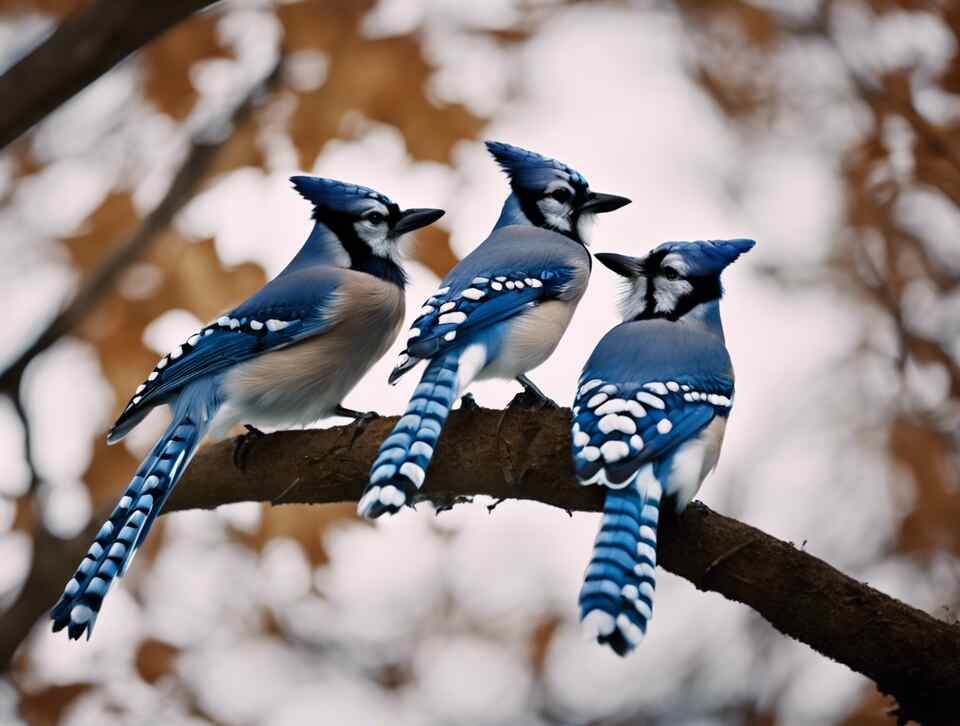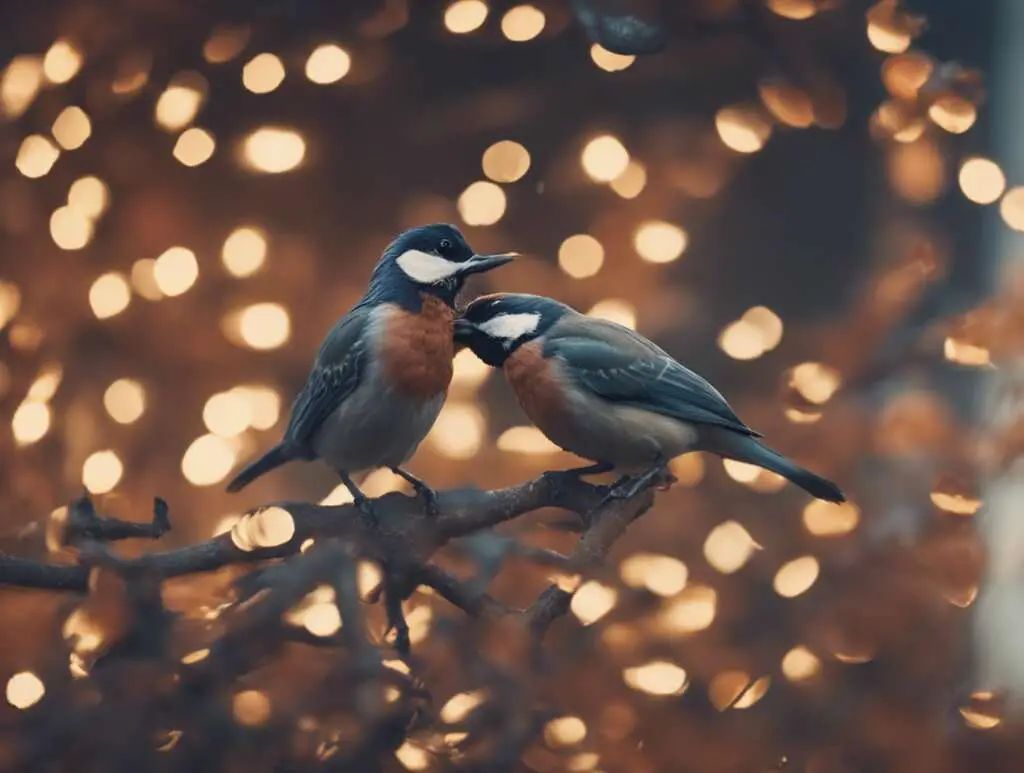Have you ever wondered if birds engage in the same affectionate behavior we commonly associate with human relationships? The idea of birds “kissing” has long been a topic of fascination and debate among bird enthusiasts and scientists alike. In this article, we’ll delve into the intriguing world of avian interactions and uncover the truth about whether birds do, in fact, kiss.
Table of Contents
Key Takeaways:
- Birds don’t kiss in the same way humans do.
- Beak touching in birds serves various purposes including courtship, social bonding, and feeding.
- Beak touching strengthens pair bonds and helps assess potential mates.
- It can also be a way to resolve conflicts and maintain social harmony.
- Parent birds use beak touching to feed their chicks.
- Beak touching is an important communication method in the avian world.
Do Birds Really Kiss?
Deciphering Bird Courtship and Bonding Rituals
Birds have a diverse range of behaviors and communication methods, many of which serve crucial functions in their social and reproductive lives. During courtship, birds often engage in intricate display rituals to attract mates and strengthen pair bonds. These rituals can involve vocalizations, elaborate dances, and physical contact, all of which play a vital role in the mating process.
One aspect of bird behavior that has led to the “kissing” misconception is the act of beak-to-beak contact, which is commonly observed in various bird species. This behavior, known as “bill touching” or “billing,” is often interpreted as a sign of affection or a kiss-like gesture. However, the true purpose of this behavior is not necessarily romantic in nature.
Exploring the Nuances of Bill Touching
Bill touching or billing in birds serves a variety of purposes, depending on the species and the context in which it occurs. In many cases, it is a form of greeting, bonding, or social interaction between individuals, rather than a romantic gesture. For example, some bird species engage in bill touching as a way to strengthen their pair bond, reaffirm their relationship, or share food with their partner.
Additionally, bill touching can be observed in parent-offspring interactions, as well as among members of the same social group. It can also be a way for birds to groom and care for one another, with the beak-to-beak contact serving a functional purpose rather than a purely affectionate one.
The Diversity of Avian Courtship and Mating Behaviors
While bill touching may not be a true “kiss” in the human sense, birds do engage in a wide range of courtship and mating behaviors that could be considered more akin to human romantic interactions. For instance, some species perform intricate dances, exchange gifts, or even synchronize their movements to attract and retain mates.
The way birds express affection and bond with their partners can vary greatly across species. Some birds may engage in preening, where they gently groom each other’s feathers, while others may engage in vocal duets or other forms of vocal communication. These behaviors are often crucial for maintaining pair bonds and ensuring successful reproduction.
Debunking the Myth of Bird Kisses
Despite the common perception, the majority of avian experts agree that birds do not actually “kiss” in the same way that humans do. While the beak-to-beak contact observed in some species may seem reminiscent of a kiss, it serves a more practical function related to social interaction, bonding, or feeding rather than a purely romantic gesture.
However, this does not diminish the fascinating and complex nature of bird behavior. By understanding the nuances of avian courtship and social interactions, we can gain a deeper appreciation for the rich and diverse ways in which birds communicate, form relationships, and perpetuate their species.
Appreciating the Unique Behaviors of Birds
While birds may not engage in “kissing” as we understand it, their social and reproductive behaviors are no less captivating. By exploring the intricate rituals and communication methods employed by different bird species, we can gain a deeper understanding and appreciation for the remarkable diversity of the avian world. So, the next time you observe birds interacting, take a moment to wonder at the complex and fascinating behaviors that underlie their interactions, beyond the simplistic notion of a “bird kiss.”

The Intriguing Behavior of Birds Touching Beaks
The Surprising Phenomenon of Birds Touching Beaks
Have you ever observed birds perched together, gently touching their beaks? This intriguing behavior, known as “beak touching” or “beak-to-beak contact,” is a fascinating aspect of avian communication and social dynamics. As we delve into the world of bird behavior, we’ll explore the reasons behind this unique interaction and uncover the insights it provides into the fascinating lives of our feathered friends.
The Meaning Behind Beak Touching
Beak touching is a common behavior observed in various bird species, from songbirds to waterfowl. While the specific reasons may vary, this action is generally understood to serve several important functions in the avian world.
- Courtship and Pair Bonding: One of the primary reasons for beak touching is its role in courtship and pair bonding. When birds are courting a potential mate, they may engage in this behavior as a way to strengthen their connection and reinforce their bond. This intimate gesture can be seen as a precursor to more advanced courtship rituals, such as preening or feeding each other.
- Social Interaction and Conflict Resolution: Beak touching can also be a means of social interaction and conflict resolution among birds. In situations where birds may have a conflict or hierarchy to establish, beak touching can serve as a non-aggressive way to communicate and defuse tension. This behavior can help maintain social harmony within a flock or colony.
- Parental Care and Feeding: In many bird species, beak touching is observed between parents and their offspring. Adult birds may use this behavior to feed their young, transferring food from their beaks to the chicks’ open mouths. This intimate interaction strengthens the bond between parents and their young, ensuring the proper nourishment and care of the next generation.
The Mechanics of Beak Touching
Beak touching is a delicate and precisely executed behavior. As birds approach each other, they gently touch the tips of their beaks, often with a slight sideways movement. This gentle contact can last for a few seconds, sometimes accompanied by other vocalizations or body language cues.
The precise mechanics of beak touching vary among different bird species, reflecting their unique adaptations and social structures. For example, some birds may use their beaks to gently caress or even nibble on their partner’s beak, while others may simply make a brief, light contact.
The Evolutionary Significance of Beak Touching
The prevalence of beak touching across various bird species suggests that this behavior has evolutionary significance. By promoting courtship, pair bonding, and social cohesion, beak touching likely contributes to the overall fitness and survival of bird populations.
Moreover, the fact that beak touching is observed in both closely related and distantly related bird species indicates that this behavior has deep evolutionary roots. It is possible that beak touching has been selected for over time as an effective means of communication and social interaction among birds, helping to strengthen their social structures and increase their chances of successful reproduction and survival.
Observing Beak Touching in the Wild
If you’re an avid birdwatcher or simply curious about the natural world, observing beak touching in the wild can be a truly captivating experience. Keep an eye out for birds perched together, as this is often where you’ll witness this intimate behavior. Look for subtle movements and gentle contact between their beaks, and pay attention to the surrounding context, such as the presence of potential mates or the age of the birds involved.
By understanding the significance and nuances of beak touching, we can gain valuable insights into the complex social lives of birds and appreciate the remarkable adaptations that have evolved to facilitate effective communication and interaction within avian communities.

Conclusion
Birds have a unique way of interacting with each other, and the behavior of touching beaks has captured the fascination of many. While it may not be accurate to say that birds “kiss” in the same way humans do, this intriguing behavior serves important purposes in the avian world.
As we’ve explored, birds engage in beak-touching for a variety of reasons, including courtship, social bonding, and even feeding. For many species, this behavior is a crucial part of their mating rituals, allowing them to establish and strengthen pair bonds. By touching beaks, birds can exchange important chemical and tactile information, helping them assess potential mates and reinforce their relationship.
Beyond courtship, beak-touching also plays a role in social bonding and hierarchy establishment within bird communities. Some species, like parrots and cockatoos, frequently engage in beak-touching as a way of strengthening social ties and resolving conflicts. This behavior can be observed in both wild and captive bird populations, highlighting its significance in the complex social dynamics of the avian world.
Interestingly, the act of beak-touching can also serve a practical purpose in the feeding of young birds. In some species, parents will touch their beaks to their chicks’ beaks as a way of encouraging them to open their mouths and receive food. This behavior, known as “beak-to-beak feeding,” helps ensure that the young birds get the sustenance they need to grow and thrive.
While the behavior of birds touching beaks may not resemble human kissing in the traditional sense, it is clear that this intriguing interaction holds great importance for our feathered friends. Through this behavior, birds are able to communicate, bond, and ensure the survival of their species.
As we continue to observe and study the fascinating world of birds, it’s important to remember that their behaviors and interactions are often driven by instincts and evolutionary adaptations that may differ greatly from our own. By approaching the study of avian behavior with an open and curious mindset, we can gain a deeper appreciation for the remarkable diversity and complexity of the natural world.
In the end, the question of whether birds “kiss” may be more a matter of semantics than a definitive answer. What is clear, however, is that the behavior of birds touching beaks is a captivating and essential part of their rich and vibrant lives.
As we continue to explore and learn about these remarkable creatures, we may uncover even more intriguing insights into the unique and fascinating ways in which birds interact with one another.



